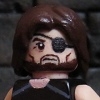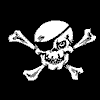-
![[image]](https://www.balancer.ru/cache/sites/f/a/farm6.staticflickr.com/5062/128x128-crop/5661865909_bee76d0aaa_b.jpg)
Трамплин против катапульты, часть 2
Теги:
YYKK>> Где Вы это "услышали"... или хотя бы прочитали?
EvgenyVB> да как бы вот:
EvgenyVB> Трамплин против катапульты, часть 2 [YYKK#07.08.12 07:00]
EvgenyVB> жду отмазок
Стесняюсь спросить, а как ты сам считаешь? :
- дополнительно две стартовые позиции к уже имеющимся для трамплина не увеличат разве темп запуска авиагруппы?
- и, насколько же альтернативное восприятие нужно иметь, чтобы в процитированном углядеть, что-либо иное сказаному?
Но можешь и дальше ждать "отмазок".
EvgenyVB> да как бы вот:
EvgenyVB> Трамплин против катапульты, часть 2 [YYKK#07.08.12 07:00]
EvgenyVB> жду отмазок
Стесняюсь спросить, а как ты сам считаешь? :
- дополнительно две стартовые позиции к уже имеющимся для трамплина не увеличат разве темп запуска авиагруппы?
- и, насколько же альтернативное восприятие нужно иметь, чтобы в процитированном углядеть, что-либо иное сказаному?
Но можешь и дальше ждать "отмазок".


...
EvgenyVB> да как бы вот:
EvgenyVB> Трамплин против катапульты, часть 2 [YYKK#07.08.12 07:00]
Пардон, что влезаю, но я тоже это понял как утверждение, что 2 катапульты + трамплин = меньше времени на запуск авиагруппы, чем один трамплин.
EvgenyVB> да как бы вот:
EvgenyVB> Трамплин против катапульты, часть 2 [YYKK#07.08.12 07:00]
Хотели ускорить темп выпуска первых самолётов и уменьшить средний интервал взлета... Да и попробовать на деле. Так-как при значительно большей авиа группе тот же тем запуска... не то.
Пардон, что влезаю, но я тоже это понял как утверждение, что 2 катапульты + трамплин = меньше времени на запуск авиагруппы, чем один трамплин.


Ропот> - дополнительно две стартовые позиции к уже имеющимся для трамплина не увеличат разве темп запуска авиагруппы?
?
дополнительно - это как?
какие позиции?
я не сильно понял, о чем вы.
Ропот> - и, насколько же альтернативное восприятие нужно иметь, чтобы в процитированном углядеть, что-либо иное сказаному?
в сказанном я увидел, что темп запуска авиакрыла с трамплина выше, чем с катапульт
я неправильно понял?
Ропот> Но можешь и дальше ждать "отмазок".
не груби.
?
дополнительно - это как?
какие позиции?
я не сильно понял, о чем вы.
Ропот> - и, насколько же альтернативное восприятие нужно иметь, чтобы в процитированном углядеть, что-либо иное сказаному?
в сказанном я увидел, что темп запуска авиакрыла с трамплина выше, чем с катапульт
я неправильно понял?
Ропот> Но можешь и дальше ждать "отмазок".
не груби.


Это сообщение редактировалось 10.08.2012 в 09:04
stas27> Пардон, что влезаю, но я тоже это понял как утверждение, что 2 катапульты + трамплин = меньше времени на запуск авиагруппы, чем один трамплин.
пофиксил
внимательно прочитал пост, оказывается там речь шла уже про Ульяновск.
блин, ну и переходы
так что пардон.
пофиксил
внимательно прочитал пост, оказывается там речь шла уже про Ульяновск.
блин, ну и переходы
так что пардон.



Это сообщение редактировалось 10.08.2012 в 09:03
Наконец то Россия определилась - отечественному авианосному флоту быть!
Новость, конечно, хорошая - по крайней мере, для тех, кто заинтересован в сильной и независимой России.
Но во всей этой истории меня беспокоит один специфический аспект: хорошо зная дурь человеческую, приходится опасаться, что по горячке конструктора наломают немало дров и потратят впустую множество денег.
А конкретно - напрягают планы установки на новейшие по своей задумке корабли такой архаики, как паровые катапульты!
Даёшь паролёты отечественному флоту!
Наконец то Россия определилась - отечественному авианосному флоту быть! Новость, конечно, хорошая - по крайней мере, для тех, кто заинтересован в сильной и …// ru-aviation.livejournal.com


крот17
втянувшийся
Господа незнал куда засунуть вопрос.Решил сюда.Так что извиняйте если что не так.Сам не спец во флоте.
Вопрос
До каких широт на севере могут оперировать авианосцы с паровыми катапультами?
И где их видели.Когда у них катапульты замерзать начинают.?
Вопрос
До каких широт на севере могут оперировать авианосцы с паровыми катапультами?
И где их видели.Когда у них катапульты замерзать начинают.?


- Capt(N) [28.09.2012 09:39]: Перенос сообщений из Мочим АУГ. По морде. Чайником.
WWWW> Отсюда вывод 18 узловый (при попутном ветре) "Кузнецов" обеспечивает только "неполноценные взлетно-посадочные операции самолетов" (т.е. практически без боевой нагрузки.)
А ничего, что на "Кузнецове" самолёт другой ? Это я без всяких подковырок спрашиваю...
WWWW> Вывод простой, трамплин для взлета "нормальных" самолетов неинженерное (волевое, идиотское и т.д. и т.п.) решение.
Вот если бы к нему ещё и катапульту....
А ничего, что на "Кузнецове" самолёт другой ? Это я без всяких подковырок спрашиваю...
WWWW> Вывод простой, трамплин для взлета "нормальных" самолетов неинженерное (волевое, идиотское и т.д. и т.п.) решение.
Вот если бы к нему ещё и катапульту....


WWWW> Отсюда вывод 18 узловый (при попутном ветре) "Кузнецов" обеспечивает только "неполноценные взлетно-посадочные операции самолетов" (т.е. практически без боевой нагрузки.)
WWWW> Вывод простой, трамплин для взлета "нормальных" самолетов неинженерное (волевое, идиотское и т.д. и т.п.) решение.
Круто!!!
А для катапульты можете?
К примеру C-13 mod.2 длина разгонного трека 310 футов = 94,5 м
Максимальное ускорение при разгоне 5g=49 м/с...
Какая оконечная скорость будет?
И какая скорость должна быть для АВ с катапультой C-13 mod.3 для полноценных взлётно-посадочных операция, если оконечная скорость F/A-18E с массой 66000 фунтов(= 29937кг) составляет 161 узел (=298,2 км/ч=82,83 м/с) ???
Т.е. разница между оконечной скоростью катапульты и потребной оконечной скоростью самолёта..., а?
WWWW> Вывод простой, трамплин для взлета "нормальных" самолетов неинженерное (волевое, идиотское и т.д. и т.п.) решение.
Круто!!!
А для катапульты можете?
К примеру C-13 mod.2 длина разгонного трека 310 футов = 94,5 м
Максимальное ускорение при разгоне 5g=49 м/с...
Какая оконечная скорость будет?
И какая скорость должна быть для АВ с катапультой C-13 mod.3 для полноценных взлётно-посадочных операция, если оконечная скорость F/A-18E с массой 66000 фунтов(= 29937кг) составляет 161 узел (=298,2 км/ч=82,83 м/с) ???
Т.е. разница между оконечной скоростью катапульты и потребной оконечной скоростью самолёта..., а?


YYKK> Круто!!!
Куда мне эта ваша глупая цифирь, надоело
За цифирь или деньги платят
или срок дают
На АВА США идет обычная отработанная десятилетиями боевая работа, в отличие от "цирков" на трамплинниках
PS думал как назвать все эти ваши рассуждения и нашел таки термин - паралаевщина!
Куда мне эта ваша глупая цифирь, надоело
За цифирь или деньги платят
или срок дают
На АВА США идет обычная отработанная десятилетиями боевая работа, в отличие от "цирков" на трамплинниках
PS думал как назвать все эти ваши рассуждения и нашел таки термин - паралаевщина!


Capt(N):
предупреждение (+1) по категории «Пренебрежительное высокомерие или вызывающе бескультурное поведение [п.11.4]»
xab>> Стесняюсь спросить, а какой будет ход у авианосца с котлами работающми на 50% при условии, что и ктапульты надо накачивать паром?
WWWW> А где ты видел такой "хромой" авианосец да еще с катапультами?
А вот где.
WWWW - Вывод простой, трамплин для взлета "нормальных" самолетов неинженерное (волевое, идиотское и т.д. и т.п.) решение.
Допустим на Горшкове установили катапульты вместо трамплина.
И?
WWWW> А где ты видел такой "хромой" авианосец да еще с катапультами?
А вот где.
WWWW - Вывод простой, трамплин для взлета "нормальных" самолетов неинженерное (волевое, идиотское и т.д. и т.п.) решение.
Допустим на Горшкове установили катапульты вместо трамплина.
И?


xab> WWWW - Вывод простой, трамплин для взлета "нормальных" самолетов неинженерное (волевое, идиотское и т.д. и т.п.) решение.
xab> Допустим на Горшкове установили катапульты вместо трамплина.
xab> И?
трамплин например на "Кузнецове" появился не исключительно по прихоти каких-то "идиотов". Пункт постоянного базирования "Кузнецова" находится все-таки за полярным кругом, а при работе катапульты происходят неизбежные протечки пара, который при отрицательных температурах наружного воздуха будет практически сразу выпадать в конденсат, что опять при отрицательных температурах наружного воздуха создает опасность оледенения элементов катапульты. К моменту постройки "Кузнецова" приемлимого решения данной проблемы не нашли.
А насчет хваленных американских авианосцев - попадалась на глаза статистика их деятельности в арктических водах в послевоенный период (1945-90) и суммарно все американские авианосцы оперировали в Арктике около 180 сут.
Может WWWW иной раз стоит более реально смотреть на существующее положение вещей?!
xab> Допустим на Горшкове установили катапульты вместо трамплина.
xab> И?
трамплин например на "Кузнецове" появился не исключительно по прихоти каких-то "идиотов". Пункт постоянного базирования "Кузнецова" находится все-таки за полярным кругом, а при работе катапульты происходят неизбежные протечки пара, который при отрицательных температурах наружного воздуха будет практически сразу выпадать в конденсат, что опять при отрицательных температурах наружного воздуха создает опасность оледенения элементов катапульты. К моменту постройки "Кузнецова" приемлимого решения данной проблемы не нашли.
А насчет хваленных американских авианосцев - попадалась на глаза статистика их деятельности в арктических водах в послевоенный период (1945-90) и суммарно все американские авианосцы оперировали в Арктике около 180 сут.
Может WWWW иной раз стоит более реально смотреть на существующее положение вещей?!


parohod> трамплин например на "Кузнецове" появился не исключительно по прихоти каких-то "идиотов". Пункт постоянного базирования "Кузнецова" находится все-таки за полярным кругом
Вы видите разницу между вопросами базирования и экплуатации?
parohod> А насчет хваленных американских авианосцев - попадалась на глаза статистика их деятельности в арктических водах в послевоенный период (1945-90) и суммарно все американские авианосцы оперировали в Арктике около 180 сут.
А что им там делать, для начала?
Я уж неговорю про ледовую обстановку.
Можно вспомнить ВОВ/ВМВ-в аркику никто не лез-еслиб не конвои в СССР дальше ирландии и нарвика никтоб не лез вообще.
Вы видите разницу между вопросами базирования и экплуатации?
parohod> А насчет хваленных американских авианосцев - попадалась на глаза статистика их деятельности в арктических водах в послевоенный период (1945-90) и суммарно все американские авианосцы оперировали в Арктике около 180 сут.
А что им там делать, для начала?
Я уж неговорю про ледовую обстановку.
Можно вспомнить ВОВ/ВМВ-в аркику никто не лез-еслиб не конвои в СССР дальше ирландии и нарвика никтоб не лез вообще.


- Capt(N) [05.10.2012 10:32]: Перенос сообщений из Модернизация тавкр проекта 1143 "Адмирал Горшков"/"Vikramaditya"для ВМС Индии
- Capt(N) [05.10.2012 10:34]: Перенос сообщений из Модернизация тавкр проекта 1143 "Адмирал Горшков"/"Vikramaditya"для ВМС Индии
parohod> трамплин например на "Кузнецове" появился не исключительно по прихоти каких-то "идиотов". Пункт постоянного базирования "Кузнецова" находится все-таки за полярным кругом, а при работе катапульты происходят неизбежные протечки пара, который при отрицательных температурах наружного воздуха будет практически сразу выпадать в конденсат, что опять при отрицательных температурах наружного воздуха создает опасность оледенения элементов катапульты. К моменту постройки "Кузнецова" приемлимого решения данной проблемы не нашли.
Тогда поясните почему Большие крейсера с авиационным вооружением (именно-так!) пр.1160 а, затем 1153 проектировались именно с катапультами.
Или базироваться они должны были где-то в другом месте???
Или проектировщики учитывали Глобальное потепление???
Ответ очень прост. (как подсказка, катапульты опять появились на "Ульяновске")
PS "Варяг" так и вообще предназначался для Дальнего востока на который в конце -концов и попал...
Тогда поясните почему Большие крейсера с авиационным вооружением (именно-так!) пр.1160 а, затем 1153 проектировались именно с катапультами.
Или базироваться они должны были где-то в другом месте???
Или проектировщики учитывали Глобальное потепление???
Ответ очень прост. (как подсказка, катапульты опять появились на "Ульяновске")
PS "Варяг" так и вообще предназначался для Дальнего востока на который в конце -концов и попал...
Прикреплённые файлы:


- Capt(N) [05.10.2012 10:53]: Перенос сообщений из Модернизация тавкр проекта 1143 "Адмирал Горшков"/"Vikramaditya"для ВМС Индии
- Capt(N) [06.10.2012 16:52]: Предупреждение пользователю: mina#06.10.12 16:05
как считают американцы "the annual costs of and amortization of capital of the five air force bases and their air wing are several times the costs of the full carrier and carrier air wing involved in the navy strike". (Command of The Seas by John F. Lehman)
Задачи они ставят, правда, немного другие, но считать они умеют.
Задачи они ставят, правда, немного другие, но считать они умеют.


- Capt(N) [07.10.2012 20:49]: Предупреждение пользователю: iodaruk#07.10.12 16:02
Специалисты по МРАУ поправят, но от супостата есть такая информация:
The carriers employed two modes of flight operations, cyclic operations and Alpha strikes.
During cyclic operations, a carrier would launch and recover 25 to 40 aircraft every hour and a half during its twelve-hour assigned period of flight operations, conducting eight cycles or events during each flying day. The first event would launch, the second event would launch an hour and a half later, and the first event would immediately land. Planes from the first event would be quickly refueled and rearmed, pilots briefed, and then launched again before the second event landed. Launch and recovery times were staggered among the carriers during the day to keep planes over the target area at all times. The largest number of aircraft committed to a single target in one strike under the cyclical mode would be 15 or 20.
Alpha strikes were used when it was needed to put a very heavy weight of effort on a single target complex in a very short period of time, either for the shock effect or because of the necessity to penetrate very heavy defenses, such as in the case of attacks in the vicinity of Haiphong and Hanoi. On an Alpha strike, all available aircraft on the carrier were organized into a single strike group. Alpha strikes were normally coordinated with the other carriers on the line and quite often with major U.S. Air Force strike efforts coming out of Thailand. On occasion, as many as five carriers could be available on the line due to overlapping of carriers arriving and departing. Then five Alpha strikes could pound a single target within an hour, with the Air Force also coming in before and after the Navy effort. To prepare for an Alpha strike, air operations were suspended for about two hours prior to launch time to permit all aircraft to be refueled, rearmed, and spotted for the launch. It took up to an hour and a half after the recovery of an Alpha strike to resume cyclic operations, which could then continue for the rest of the flying day or night.
It is interesting to compare the Air Force and Navy tactical air operations during the Vietnam war. The Air Force flew out of bases mainly in Thailand. Because of the distances involved, the strike group would refuel once or twice enroute to the target, and after the strike would rendezvous over the Gulf of Tonkin and refuel from tankers under Navy control. Air Force tactical operations were basically a continuous series of Alpha strikes. On the other hand, the Navy conducted mainly cyclic operations, with occasional Alpha strikes when targeting demanded. In this way, more targets were being covered on a more continuous basis, but with much lower level of effort per individual target than was provided by either the Alpha strike or the Air Force system.
The carriers were able to move about within the Gulf of Tonkin to bring their aircraft closer to their targets, thereby eliminating or substantially limiting the amount of refueling necessary. This was important because aerial refueling facilities from the carriers were limited. Carrier-based tankers were normally used only in emergency situations when planes became inadvertently low on fuel because of unplanned occurrences, such as rescue operations or striking fleeting targets of opportunity. On one occasion, for example, for an Alpha strike on Haiphong, the Enterprise moved to within 30 miles of that port city to launch its strike group, and the A-4s were able to remove their drop tanks and carry three 1,000-pound bombs into the target.


- Capt(N) [08.10.2012 17:02]: Административное предупреждение: Capt(N)#08.10.12 17:02
- Capt(N) [08.10.2012 20:44]: Перенос сообщений в Развитие авианесущих кораблей СССР/РФ [2]
- Capt(N) [08.10.2012 20:45]: Перенос сообщений в Развитие авианесущих кораблей СССР/РФ [2]
2 All
Джентльмены,данная тема посвящена конструкторским решениям на авианесущих кораблях для запуска своей авиа.группы. Здесь инженерно-конструкторская тема о кораблях что были, есть и еще будут. Для обсуждения исключительного пути СССР/РФ в строительстве своих авианесущих кораблей есть отдельная тема куда и перенесена часть постингов http://forums.airbase.ru/2007/07/t56463,15--razvitie-avianesuschikh-korablej-sssr-rf-2.html . Там не будет оффтопом обсуждение места базирования, вариантов боевого использования, средств и сил сопровождения тавкр ВМФ СССР/РФ
Джентльмены,данная тема посвящена конструкторским решениям на авианесущих кораблях для запуска своей авиа.группы. Здесь инженерно-конструкторская тема о кораблях что были, есть и еще будут. Для обсуждения исключительного пути СССР/РФ в строительстве своих авианесущих кораблей есть отдельная тема куда и перенесена часть постингов http://forums.airbase.ru/2007/07/t56463,15--razvitie-avianesuschikh-korablej-sssr-rf-2.html . Там не будет оффтопом обсуждение места базирования, вариантов боевого использования, средств и сил сопровождения тавкр ВМФ СССР/РФ


- Capt(N) [08.10.2012 20:55]: Административное предупреждение: Capt(N)#08.10.12 20:55
parohod> трамплин например на "Кузнецове" появился не исключительно по прихоти каких-то "идиотов". Пункт постоянного базирования "Кузнецова" находится все-таки за полярным кругом, а при работе катапульты происходят неизбежные протечки пара, ////
Люди близкие к теме утверждают, что катапульту не сделали потому что не смогли, а не захотели.
Люди близкие к теме утверждают, что катапульту не сделали потому что не смогли, а не захотели.


Copyright © Balancer 1997..2021
Создано 08.11.2006
Связь с владельцами и администрацией сайта: anonisimov@gmail.com, rwasp1957@yandex.ru и admin@balancer.ru.
Создано 08.11.2006
Связь с владельцами и администрацией сайта: anonisimov@gmail.com, rwasp1957@yandex.ru и admin@balancer.ru.
 Ропот
Ропот

 инфо
инфо инструменты
инструменты stas27
stas27


 Snake
Snake


 крот17
крот17









 Capt(N)
Capt(N)







